Cloudburst in Copenhagen July 2, 2011, response and consequences
The cloudburst in the capital on Saturday, July 2, 2011 paralyzed much of the city's infrastructure for several days.
In just an hour and a half, 100-150 mm of rainwater fell.
For many houses, this meant water seeping in from streets and alleys and the return flow of contaminated water from sewage systems. Lots of movable assets were destroyed and it is now a matter of avoiding further losses from damage to the buildings and negative impact on public health.

Example from an ordinary home
In the southwest neighborhood is an ordinary family house, built in the sixties and equipped with a full basement - a nice house with plenty of space for a whole family.
Normally, an average family living here uses around 150 m3 of waterworks water per year.
On Saturday, July 2, 2011, the same amount of water was delivered back from the floodgates of heaven to the family's house and property in just an hour and a half - no drainage system can handle that and the result was a ruined basement!
Sewage from the toilet and drains seeped in and within a short time the entire basement was flooded with foul smelling sewage mixed with dead rats!
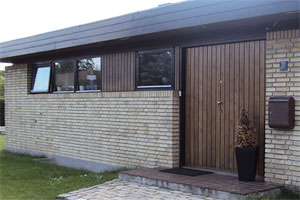
The residents initially tried to fight the damage and save their belongings as much as possible. Unfortunately, even at this early stage, it had a very direct impact on the state of health in the house. Some of the building's residents suffered a stomach ulcer as a direct consequence of contact with the contaminated sewage.
When contacting the insurance company on Monday, July 4, the green light was given to initiate a repair via the damage service company ASAP. By that time, the sewage had backed up into the drains, leaving behind the foul and smelly residue that the sewage had left behind.
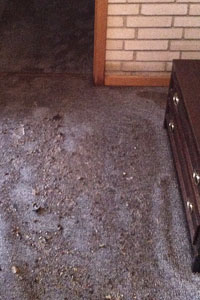
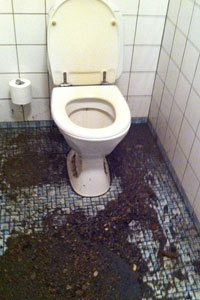
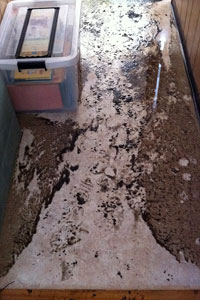
Images after the flood |
Preparation and security
The damage service company ASAP by Flemming Servais arrived on site. Flemming first chose to treat the entire affected area with the product ProtoxHysan. The purpose of the ProtoxHysan application is to eliminate pathogenic bacteria and viruses and reduce odors.
The risk of contamination was thus immediately minimized for the family and for ASAP's claims team. The family members were able to report shortly afterwards that the odors were now very limited.
Workflow
To ensure the drying out of the basement, all fixtures and fittings were removed, as well as skirting boards, doorsteps, door frames and drywall to avoid breeding grounds for continued mold and bacteria growth. ProtoxHysan was then sprayed onto the exposed areas and the product was worked in using a brush - in accordance with the well-known "Protox method", as it is also known from mold remediation.
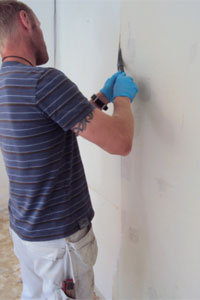
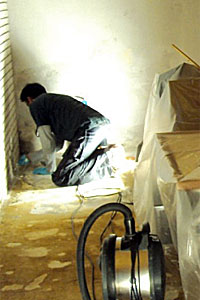
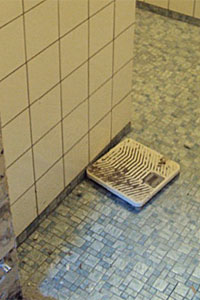
All organic parts are removed to avoid further growth |
Dehumidifiers and fans were installed and will dry out the basement in the coming weeks. Moisture content in the basement building materials is continuously measured. The concrete floors in the basement are rasped with a concrete planer to remove residues of organic carpet glue and holes are drilled into the floor to measure moisture content with plug-in probes.
Control
Flemming Servais from ASAP has used the quick test: Proclean to determine if there are still impurities/protein residues from the sewage water. Tests are carried out at selected locations, giving a good indication of how the cleaning and disinfection is progressing.

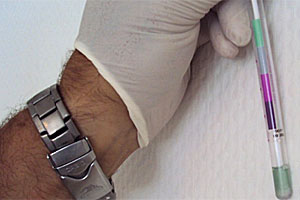
Control and testing |
Once the basement has been dehumidified, final disinfection of the area should be carried out with Hysan and tested for any residual pathogenic bacteria.
Is it happening again?
According to DMI, the cloudburst is the most powerful in more than 50 years, but DMI also suggests that it may not be 50 years before the next cloudburst delivers similar amounts of water. Should we then accept that great values will again be lost?
Systems exist to prevent sewage backflow - check valve systems and pump wells are known methods. Improved public planning and construction of drainage systems is also underway.
The costs will probably have to be borne by both private and public funds, and it is to be expected that some regulation in this area will take place via the insurance companies' policy conditions; for example, for homes with basements.
In any case, rapid response is crucial to the extent of the damage - and with the right tools and working methods, we can still ensure limited damage to buildings and health.
Technology:
- ProtoxHysan, disinfectant and deodorizer, Protox
- Gardena garden sprayer used for paving, XL DIY store
- Dehumidifiers, Munters, desiccant dehumidifiers 21 l/day, Munters
- Proclean, rapid tester, Protox
- Moisture meters, plug-in probe meters and capacitance meters, Buhl and Bønsø
- Miscellaneous cover and hand tools, XL DIY store
